Gundestrup Cauldron: Great Gilded Silver Vessel Decorated With Scenes Derived From Celtic Mythology
A. Sutherland – MessageToEagle.com – Among the most interesting archaeological finds that have been at times associated with Celtic culture is the Gundestrup Cauldron, a magnificent vessel made from richly decorated plates of silver that were assembled into a single cauldron.
However, the place where the artifacts were discovered, was never inhabited by the Celts.
Was the artifact manufactured at a location somewhere in Central Europe? Is it a result of cultural contacts between the Thracians and Celts in Bulgaria?
The almost 9 kg heavy cauldron is decorated with cult images difficult to interpret. On the outside is seen divine heads flanked by small figures; the main cult was an important element in the Celtic religion. The inside shows inter alia sword heroes confronting a procession of fabulous creatures (possibly unicorns). The National Museum, Copenhagen
The Gundestrup Cauldron is the largest single silver object known from the La Tene era, when La Tène Culture flourished from about 500 BC to the Roman conquest in the 1st century BC, in several countries such as Belgium, eastern France, Switzerland, Austria, Southern Germany, the Czech Republic, Poland, Slovakia, Slovenia, Croatia and parts of Hungary and Romania.
See also:
Herne The Hunter – The Horned God And Lord Of The Forest In British Mythology
It is generally agreed that the Gundestrup Cauldron dates to the mid-2nd century BC, but its manufacturing place and time have been a matter of much debate over the course of the last century.
The cauldron was found in pieces in 1891, in a bog at Gundestrup in Northern Jutland, Denmark, in a region that has never been associated with Celtic habitation. The artifact weighs 9 kg and consists of 14 plates, is 42 cm high and 69 cm in diameter; it has a round bottom, with a double upper part composed of the relief-filled outer and inner plates.
The clearest image of Cernunnos is found on the silver votive cauldron, the Gundestrup Cauldron, discovered in Denmark which shows him seated, wearing a stripy close-fitting tunic and trousers, with a royal torc or neck-ring about his neck. In one hand he holds up another torc while in the other he holds a ram-headed snake. (At display at the National Museum (Nationalmuseet) in Denmark). photo via wikipedia
The outside has originally consisted of eight almost square tiles, seven of which have been preserved; each of these adorned by an idol-eye glass of additions. The inside consists of five plates adorned with idols, hunting, and sacrificial scenes. The base plate is different from the others by its high relief and exceptional artistic quality.
Interestingly, the silver working of the artifact is not considered to represent typical Celtic metallurgy, but there is also some evidence that suggests considerable Celtic influence, especially in the images depicted on the cauldron that seem to be derived from Celtic mythology.
Moreover, analyses of both the silver and the tin that were used to hold the plates together, clearly indicate that metalwork originates from regions of Europe usually associated with Celtic habitation.
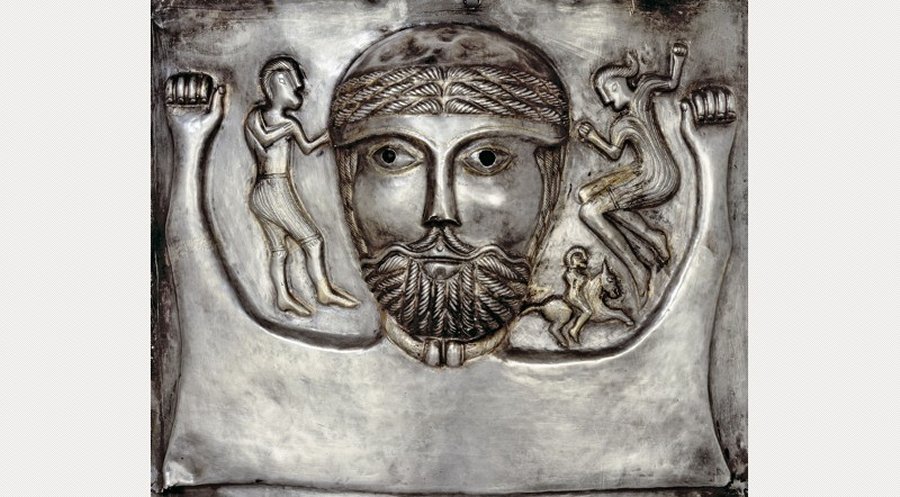
Was the cauldron produced by Thracian smiths at the request of a Celtic tribe in Gaul? It is unknown how the artifact came to be in Denmark but there are different suggestions and one of them is that it was looted and then transported to Denmark by the Cimbri, a Germanic tribe.
A Greek geographer, philosopher, and historian, Strabo, and Tacitus, a historian of the Roman Empire, identifies the Cimbri people with a group living in Jutland, but strong evidence for this connection does not exist.
The commonly accepted thesis that the Gundestrup artifact was manufactured in Thracian southeast Europe was recently questioned.
Silversmithing was a specialty of the region, researchers say, but this particular skill was developed in Thrace in the 5th and 4th centuries BC – much earlier than the proposed date for the cauldron.
Wherever the artifact was made and whatever influences its rich mythological imagery contains, the Gundestrup vessel must have been an important ritual object.
Written by – A. Sutherland – MessageToEagle.com Senior Staff Writer
Copyright © MessageToEagle.com All rights reserved. This material may not be published, broadcast, rewritten or redistributed in whole or part without the express written permission of MessageToEagle.com
Related Posts
-
 Battle Of Himera: New Study That Contradicts Historical Accounts
No Comments | May 25, 2021
Battle Of Himera: New Study That Contradicts Historical Accounts
No Comments | May 25, 2021 -
 Brown Hares And Chickens Were Seen As Gods Not Food In Iron Age Britain
No Comments | Apr 12, 2020
Brown Hares And Chickens Were Seen As Gods Not Food In Iron Age Britain
No Comments | Apr 12, 2020 -
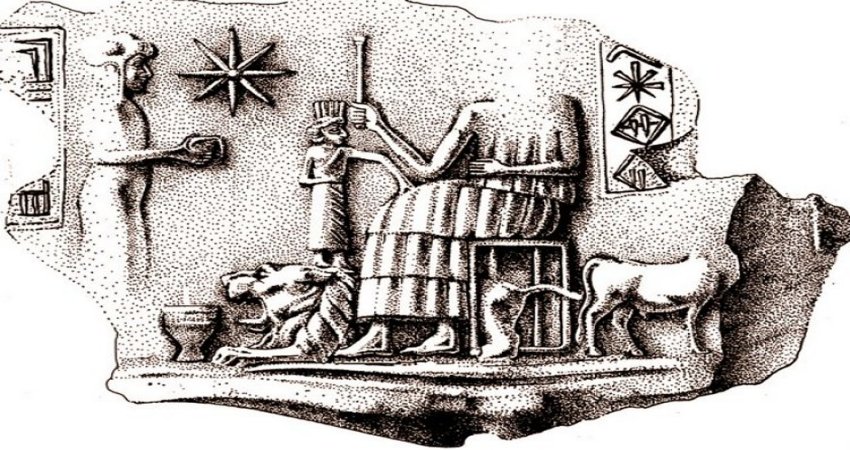 Ancient City Of Urkesh – Home Of Kumarbi – The Foremost Son Of Anu
No Comments | Aug 25, 2020
Ancient City Of Urkesh – Home Of Kumarbi – The Foremost Son Of Anu
No Comments | Aug 25, 2020 -
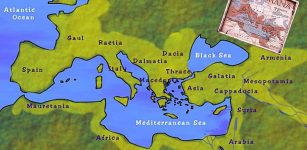 Dark And Light Sides Of Pax Romana: Great Political Slogan Introduced After Civil Wars
No Comments | Mar 20, 2023
Dark And Light Sides Of Pax Romana: Great Political Slogan Introduced After Civil Wars
No Comments | Mar 20, 2023 -
 Water And Its Secrets: Water Has A Memory Far Longer Than Our Transient Lifetimes
No Comments | Jul 13, 2015
Water And Its Secrets: Water Has A Memory Far Longer Than Our Transient Lifetimes
No Comments | Jul 13, 2015 -
 Mysterious World Of Ancient Dwarves
No Comments | Mar 28, 2015
Mysterious World Of Ancient Dwarves
No Comments | Mar 28, 2015 -
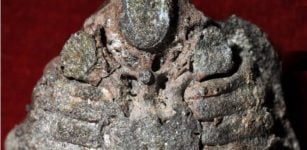 Did Human Middle Ear Evolve From Fish Gills? – Chinese Fossils Reveal
No Comments | Jun 20, 2022
Did Human Middle Ear Evolve From Fish Gills? – Chinese Fossils Reveal
No Comments | Jun 20, 2022 -
 Remarkable 700-Year-Old Ship Found In Estonia Is One Of The Most Important Archaeological Discoveries In Europe – Scientists Say
No Comments | Apr 25, 2022
Remarkable 700-Year-Old Ship Found In Estonia Is One Of The Most Important Archaeological Discoveries In Europe – Scientists Say
No Comments | Apr 25, 2022 -
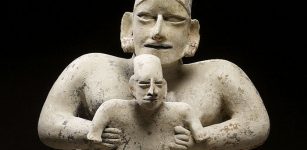 Ancient Mothers Cared For Kids Better Than Previously Thought
No Comments | Nov 29, 2021
Ancient Mothers Cared For Kids Better Than Previously Thought
No Comments | Nov 29, 2021 -
 2,700 Year Old Equestrian Armor In Assyrian-Style Leather Evidence Of Technology Transfer In Antiquity
No Comments | Dec 10, 2021
2,700 Year Old Equestrian Armor In Assyrian-Style Leather Evidence Of Technology Transfer In Antiquity
No Comments | Dec 10, 2021


